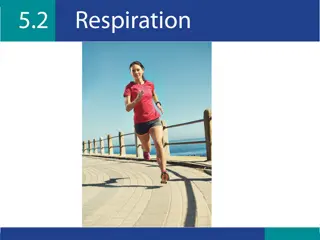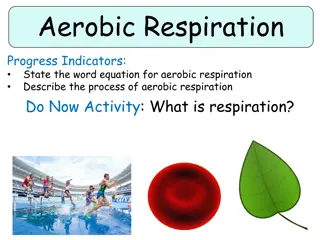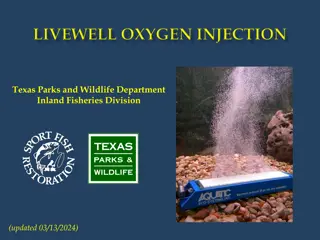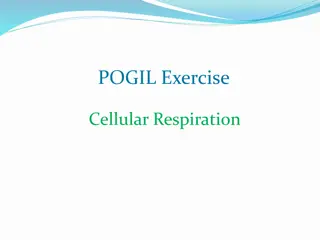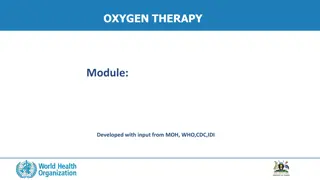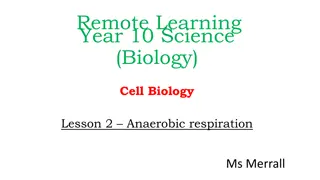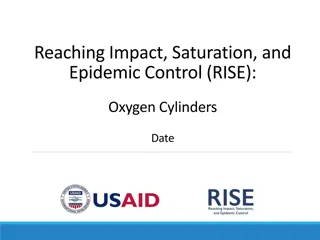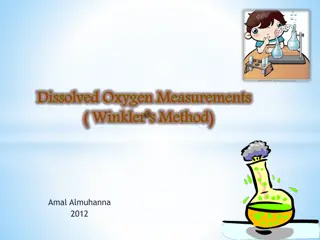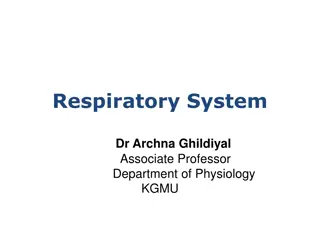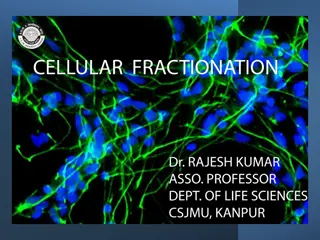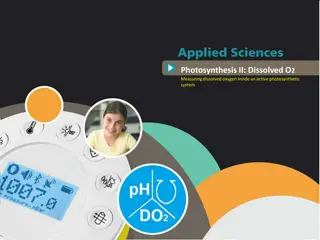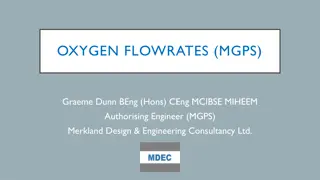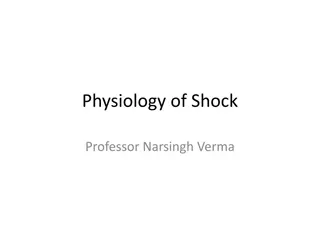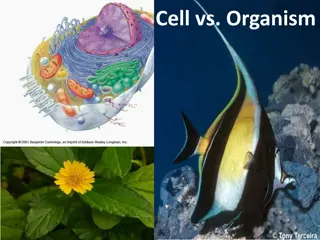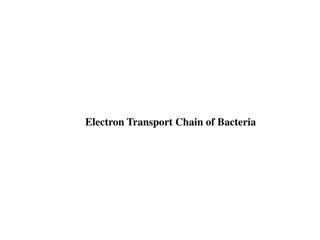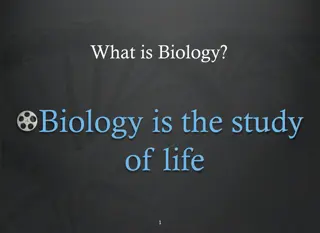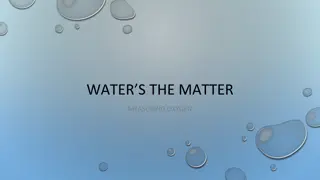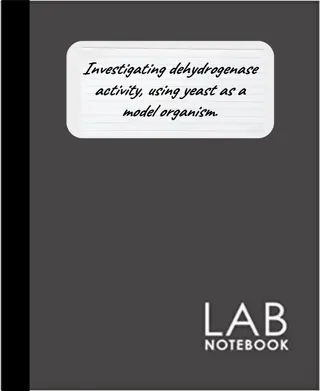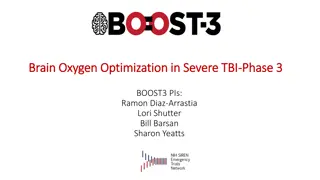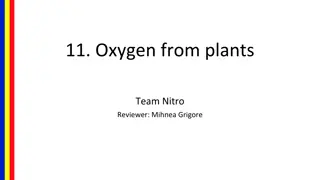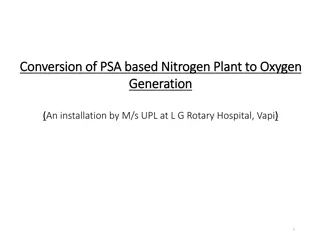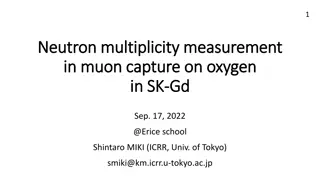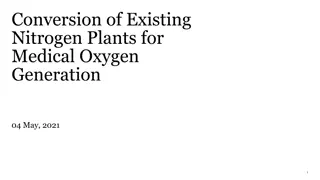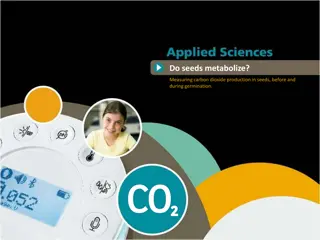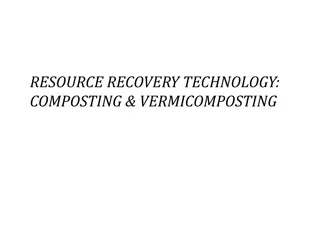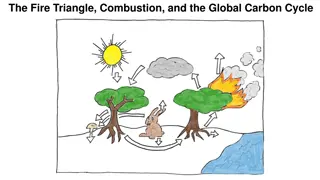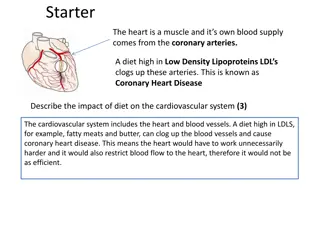Understanding Cellular Respiration and Oxygen Delivery
Cellular respiration, a vital process for organ survival, involves mitochondria performing cellular respiration by utilizing glucose and oxygen. Glucose is derived from diet or body breakdown, while oxygen enters through the respiratory system, facilitated by red blood cells in the circulatory system. This complex process is essential for generating ATP, the energy currency of cells.
Download Presentation

Please find below an Image/Link to download the presentation.
The content on the website is provided AS IS for your information and personal use only. It may not be sold, licensed, or shared on other websites without obtaining consent from the author. Download presentation by click this link. If you encounter any issues during the download, it is possible that the publisher has removed the file from their server.
E N D
Presentation Transcript
To support your survival, your organs must To support your survival, your organs must have cells with mitochondria that effectively have cells with mitochondria that effectively perform cellular respiration. perform cellular respiration. What is the equation for cellular respiration? What is the equation for cellular respiration?
carbon dioxide CO2 glucose C6H12O6 oxygen O2 water H2O ATP + + + Equation is simple but the processes that support cellular Equation is simple but the processes that support cellular respiration are complex. Let s look at it in more detail. respiration are complex. Let s look at it in more detail. Cellular respiration occurs in nearly all of the cells in the body, Cellular respiration occurs in nearly all of the cells in the body, with most of the key processes occurring in the mitochondria. with most of the key processes occurring in the mitochondria. How does the glucose and oxygen get to the cells? How does the glucose and oxygen get to the cells?
Source of cellular oxygen: Source of cellular oxygen: The air has 21% oxygen Oxygen enters the body through your mouth and nostrils when you breath in. Oxygen then travels down the trachea, then enters the lungs via the bronchi and bronchioles before entering the alveoli Within the alveoli, oxygen crosses the thin membranes of the lung s alveoli and the thin membranes of capillaries that surround the alveoli.
Source of cellular oxygen: Source of cellular oxygen: Once oxygen enters the capillaries, it will be picked up and carried in the red blood cells. The capillaries are associated with the circulatory system that carry blood and red blood cells past all cells in the body. When cells need oxygen, oxygen is downloaded from the red blood cells, in the blood, across the walls of the capillaries, and then across the walls of the cells where they are available to the mitochondria.
Source of glucose: Source of glucose: Glucose is a sugar. It can comes directly from the diet and the breakdown of other nutrients to glucose within, the body and particularly from the liver. Once you swallow your food, it passes from the mouth, to the esophagus, stomach, and intestine. In the intestine, broken down food molecules cross the thin cell walls of the intestine and cross the thin walls of capillaries and enter the circulation.
Source of glucose: Source of glucose: The liver can make glucose from the breakdown of other macronutrients and transfer glucose into the circulation. Glucose is then delivered to the cells, where needed, much like oxygen is.
Cellular respiration: Cellular respiration: In the cell, glucose is broken down to acetyl-CoA by glycolysis. Acetyl-CoA is transferred into the mitochondrion. Acetyl-CoA enters the citric acid (TCA) cycle where CO2 is produced in the production of NADH and FADH2. NADH and FADH2 provide electrons to the electron transport chain. The electron transport chain uses the electrons to power the conversion of oxygen into water and to power the production of ATP. C6H12O6 (from your food) O2 (from breathing air in) glycolysis electron transport chain TCA cycle CO2 (exhaled with your breath) ATP H2O (used if needed or contributes to urine) (used as a source of energy for most all actions of the body)
Removing waste: Removing waste: The water that is produced by the electron transport chain can be used by the cells as needed or excreted by the body, after it re- enters the circulation and is delivered to the kidneys for release by urination. Carbon dioxide enter the circulation and it is release from capillaries at the lungs to the lungs alveoli. Carbon dioxide is released from the lungs when you exhale.





